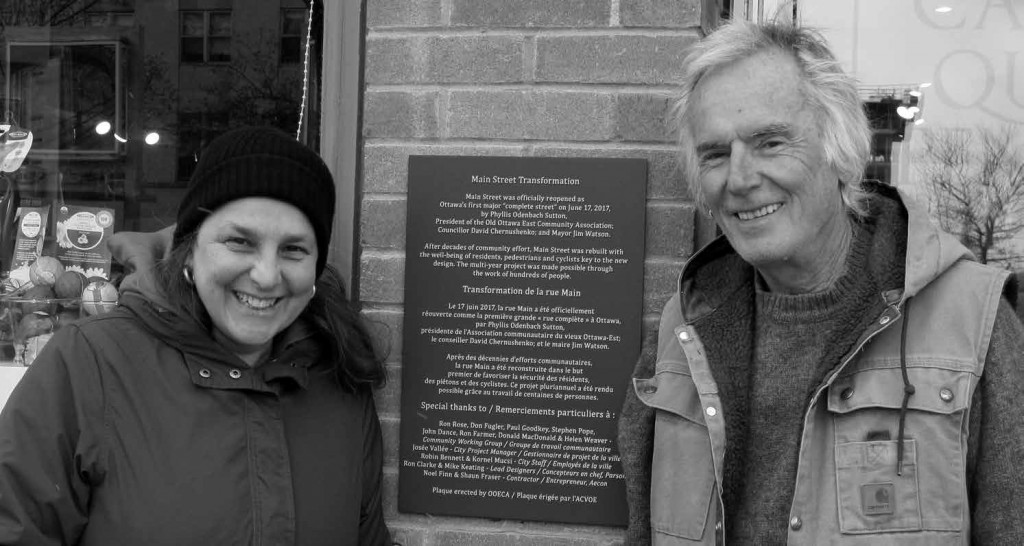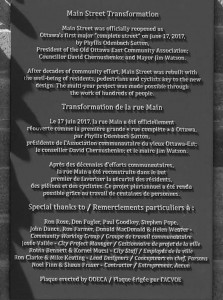
Helen Weaver and Ron Farmer represented Main Street businesses during the lengthy consultations on rebuilding Main Street and they are among those recognized by the new Main Street Transformation plaque between Singing Pebble Books and Café Qui Pense. Photo by John Dance
John Dance
As a result of the recently installed Main Street Transformation plaque, a vital aspect of Old Ottawa East history is now cast in bronze for the ages and for all to see.
Located on the brick pillar between Main Street’s Café Qui Pense and Singing Pebble Books, the modest green plaque notes: “After decades of community effort, Main Street was rebuilt with the well-being of residents, pedestrians and cyclists key to the new design. The multi-year project was made possible through the work of hundreds of people.”
It had long been the goal of many community members to make Main Street a safer and more comfortable street and, over the years, improvements such as increased parking and better sidewalks on the eastern side were implemented.
But the street remained a speedway for commuters and a misery for pedestrians and cyclists. Lane reductions had been contemplated for many years, but it wasn’t until City of Ottawa staff recognized the many values of having “complete streets,” that lane reductions, wider sidewalks and separated cycle lanes were seen as meritorious.
In 2012, representatives from the community association, Main Street businesses, churches, schools and others began their collaboration with City staff during a lengthy series of working group meetings that, in 2013, culminated in a “complete street” recommendation that went to the City’s Transportation Committee.
There, the proposal squeaked through, but it was then resoundingly approved by City Council.
In 2015, construction work began, and in June 2017, Main Street was re-opened as the transformed artery of Old Ottawa East.
The new commemorative plaque was erected by the Old Ottawa East Community Association. The plaque specifically recognizes the significant contributions of various community members, as well as key City staff who courageously pushed for a liveable street and then made it happen.
In addition to the people mentioned on the plaque, the project’s success was dependent on the residents and businesspeople of Main, Clegg, Marlowe and several other streets in the community who endured two years of construction activity.
The transformation also resulted in the rebuilding and restoration of the Brantwood Gates, an effort long championed by Eugene Haslam and the Strathcona branch of the Royal Canadian Legion. The gates are dedicated “To the memory of those who made the supreme sacrifice and to the honour of the men and women of this community who served in the armed forces.”
Special thanks for the creation and translation of the plaque go to Jocelyne Caloz, Carol Alette and Margaret Moriarity. Poppy and Helen Weaver kindly agreed to hosting the plaque on their building.
An official unveiling of the new plaque will be scheduled once the pandemic is over.







